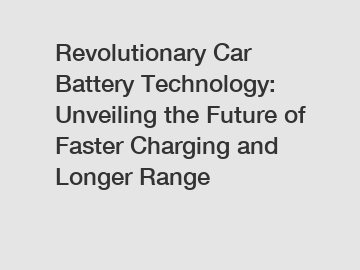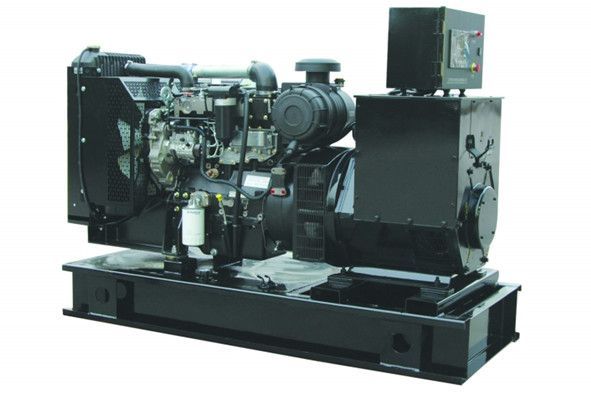Understanding the Working Principles and Applications of Lithium Batteries
Lithium batteries have become an integral part of modern life, powering our portable electronic devices and revolutionizing the electric vehicle industry. In this comprehensive article, we will delve into the fundamentals of lithium batteries, exploring their composition, working principles, and diverse applications. By the end of this read, you will have a clear understanding of how these remarkable energy storage devices function and why they have become so ubiquitous in our daily lives.

The Composition of Lithium Batteries
Lithium-ion batteries, are electrochemical cells, meaning they convert chemical energy into electrical energy through redox reactions. These batteries consist of several key components:
1. Cathode
The cathode is a critical component of the lithium battery, and its composition varies depending on the battery type. Common cathode materials include lithium cobalt oxide (LiCoO2), lithium iron phosphate (LiFePO4), and lithium nickel cobalt manganese oxide (LiNiCoMnO2). The cathode's role is to release and absorb lithium ions during charging and discharging, respectively.
2. Anode
The anode is typically made of graphite, which serves as a host material for lithium ions during the charge-discharge process. When the battery is charging, lithium ions move from the cathode to the anode, and during discharge, they travel back to the cathode.
3. Separator
The separator is a thin, porous membrane placed between the cathode and anode to prevent direct contact between them. It allows the flow of lithium ions while preventing internal short circuits.
4. Electrolyte
The electrolyte is a conductive solution that enables the movement of lithium ions between the cathode and anode. In traditional lithium-ion batteries, the electrolyte is a liquid composed of lithium salts dissolved in organic solvents. However, solid-state batteries are gaining prominence, utilizing solid electrolytes for improved safety and energy density.
5. Current Collectors
Current collectors are conductive materials, often made of copper or aluminum, that facilitate the flow of electrons between the battery's internal components and the external circuit.
Working Principles of Lithium Batteries
To understand the working principles of lithium battery pack, let's go through their charge and discharge cycles:
Charging
During the charging process, an external voltage is applied to the battery, causing a flow of electrons from the positive terminal (cathode) to the negative terminal (anode). Simultaneously, lithium ions move from the cathode through the electrolyte to the anode, where they are stored in the graphite structure.
Additional resources:Which RJ11 Patch Cord Style Is Best?
How do I know what size armoured cable to get?
7 Essential Tips for Proper Car Battery Maintenance
What is MNS switchgear?
10 Best Bench Multimeters for Accurate Measurements: Expert Reviews
Revolutionize Your Automation: Sealed Plunger Limit Switch for Ultimate Precision
Which copper flexible wire brand offers the best value for money?
Discharging
When the battery is in use, the flow of electrons is reversed, moving from the negative terminal (anode) to the positive terminal (cathode). This electron flow creates an electrical current that can power various devices or systems. At the same time, lithium ions move from the anode back to the cathode through the electrolyte, releasing stored energy.
Applications of Lithium Batteries
Lithium batteries have an extensive range of applications, contributing to the seamless functioning of numerous devices and industries. Some of the most notable applications include:
Consumer Electronics
Lithium batteries power a vast array of consumer electronics, including smartphones, laptops, tablets, and digital cameras. Their high energy density, lightweight design, and rechargeable nature make them ideal for portable devices.
Electric Vehicles (EVs)
The electric vehicle industry has experienced significant growth, largely thanks to advancements in lithium battery technology. Lithium-ion batteries provide the energy storage required for EVs, offering longer driving ranges and faster charging times.
Renewable Energy Storage
Lithium batteries play a vital role in storing energy generated from renewable sources such as solar and wind. They enable the efficient storage and distribution of clean energy, addressing the intermittency challenges associated with renewable power generation.
Medical Devices
In the medical field, lithium batteries are used to power various devices, including pacemakers, hearing aids, and portable medical equipment. Their reliability and long lifespan are essential for critical medical applications.
Aerospace and Defense
Lithium batteries find applications in aerospace and defense industries, powering satellites, unmanned aerial vehicles (UAVs), and military equipment. Their lightweight and high energy density properties are advantageous in these sectors.
Conclusion
Lithium batteries have undoubtedly transformed the way we live, work, and travel. Understanding their composition, working principles, and applications provides valuable insights into the technology driving our modern world. From consumer electronics to electric vehicles and renewable energy storage, the versatility and efficiency of lithium batteries continue to shape industries and improve our daily lives.
As technology continues to advance, we can expect further innovations in lithium battery technology, leading to even more efficient and sustainable energy storage solutions. Keeping abreast of these developments will be crucial for individuals and industries alike, as we collectively move towards a greener and more sustainable future.
Additional resources:Which Innovations are Revolutionizing Whisker Lever Limit Switches?
What is the function of a tension clamp?
Which benefits make prismatic LFP cells the top choice for B2B buyers?
What are the examples of limit switches?
What is the life expectancy of a car battery in Malaysia?
Are lithium iron phosphate batteries worth it?
Unarmored Cable vs Armored Cable: Which is Safer for Your Electrical Needs?
415
0
0
Related Articles
-
Revolutionary Car Battery Technology: Unveiling the Future of Faster Charging and Longer Range
Revolutionary Car Battery Technology: Unveiling the Future of Faster Charging and Longer Range.
234
0
0
-
115
0
0
-
114
0
0
-
110
0
0
-
Revolutionizing Connectivity: Is Fiber Optic the Gamechanger for Internet Speeds?
Revolutionizing Connectivity: Is Fiber Optic the Gamechanger for Internet Speeds?
220
0
0
-
201
0
0
-
213
0
0
-
Which spectrum analyzer offers the best value for the purchase stage?
Which Spectrum Analyzer Offers the Best Value for the Purchase Stage?
134
0
0









Comments
All Comments (0)